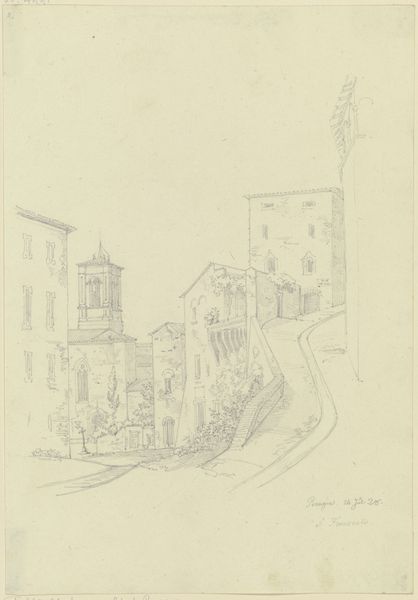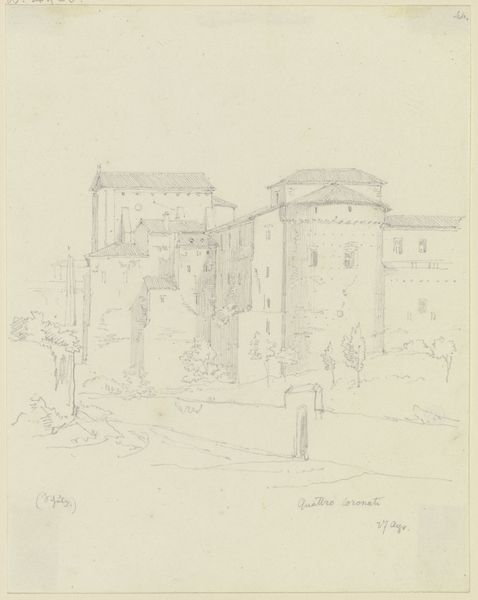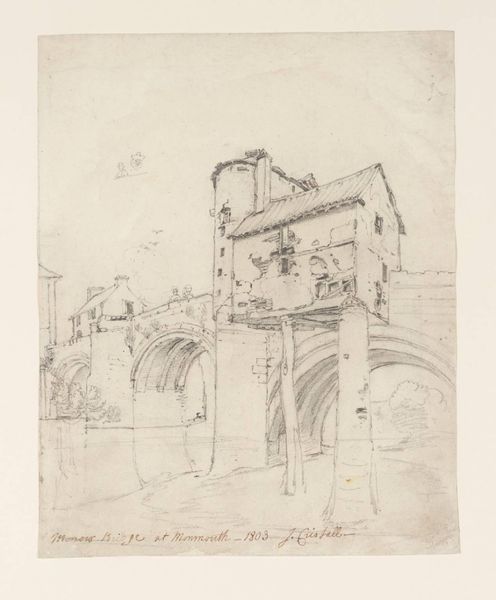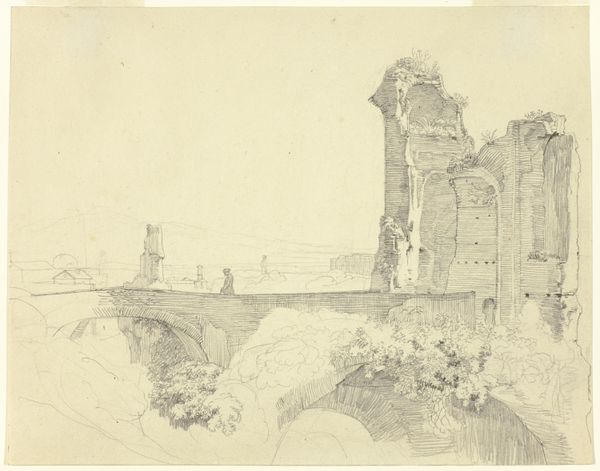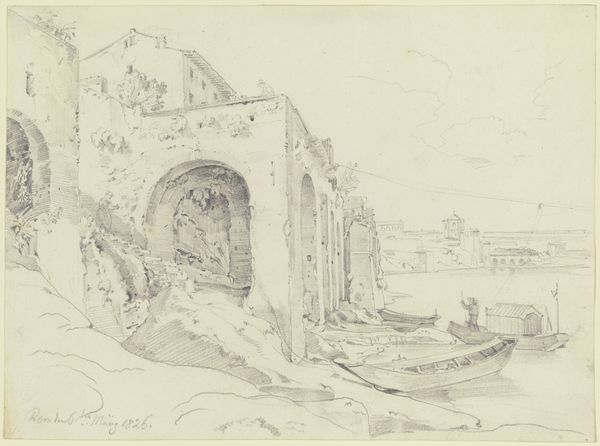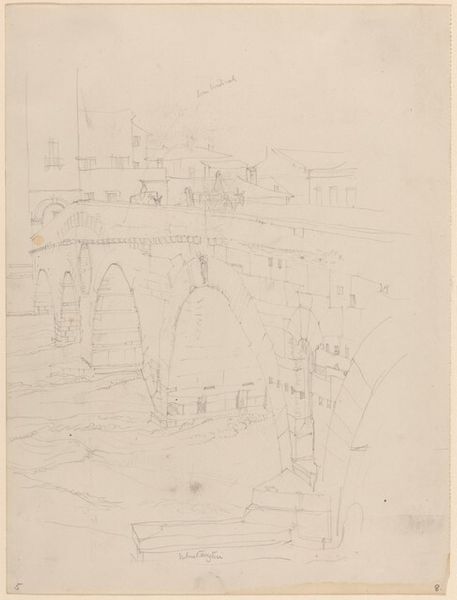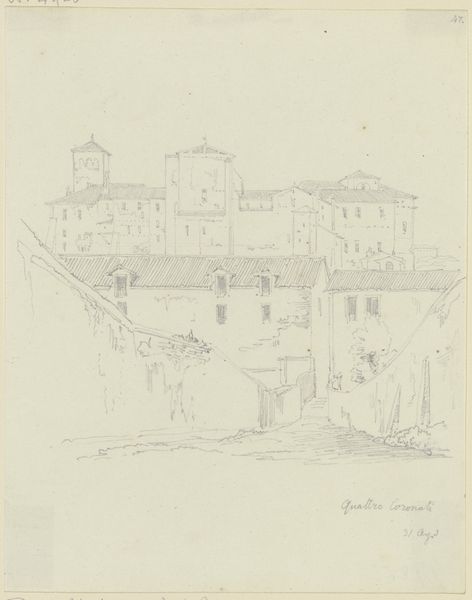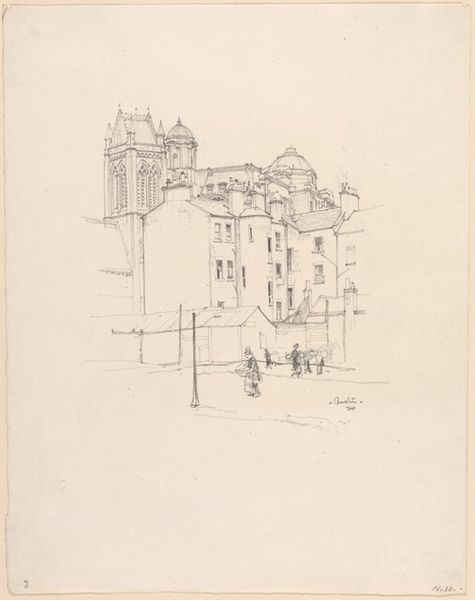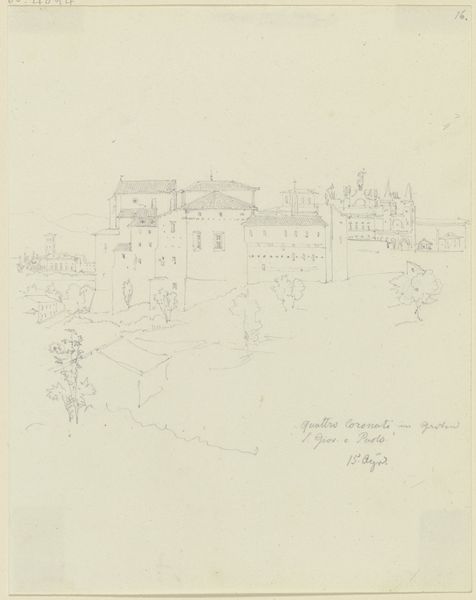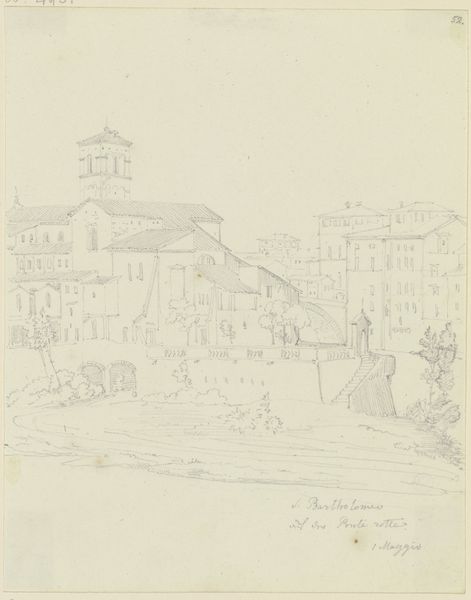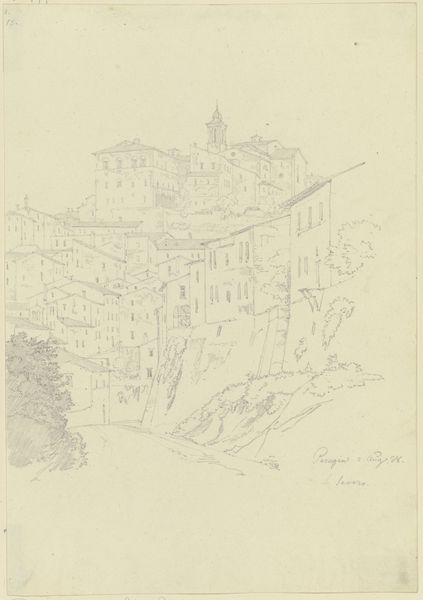
S. Bartolomeo all’Isola mit dem Pons Aemilius in Rom 1 - 1828
0:00
0:00
Copyright: Public Domain
Curator: Friedrich Maximilian Hessemer created this pencil drawing, titled "S. Bartolomeo all’Isola mit dem Pons Aemilius in Rom," around 1828. It's currently held at the Städel Museum. Editor: There’s such delicate rendering, the subtle lines capture a Roman cityscape with such restraint. You can feel the atmosphere of the water around the buildings and bridge—and all in graphite! Curator: Hessemer's drawing reflects a Romantic sensibility prevalent at the time. Notice how the ancient bridge, the Pons Aemilius, serves as a poignant symbol of time and the enduring presence of history amid urban development. The view encapsulates a certain moodiness often favored at the time. Editor: It makes me think about the materiality of the ruins depicted—the individual stones, quarried, shaped, laid by laborers… What remains is this quiet, understated document, the pencil marks another trace of human intervention. The relationship between architectural form and the means to represent it visually is stark. Curator: Absolutely. Hessemer wasn't just interested in accurately documenting architecture. He was capturing its role within a larger social and historical narrative, making it about a historical record mediated through personal sensibility and artistic choices. And its placement on paper suggests it may be a maquette for something greater. Editor: But doesn't that understatedness almost challenge the grandiose narratives sometimes projected onto such subjects? By reducing the scene to its essential lines, the labor embedded is brought into focus rather than obfuscated by the sublime. It invites us to think about what's left out of the frame as well. What did Rome represent during that historical moment for the individual artist? Curator: That's a thought-provoking point. And the choice of a pencil sketch rather than, say, a more elaborate painting is intriguing when discussing value—was this made as a quick reference study, a work of art in its own right, or simply as a demonstration to somebody else? The pencil allows for both a sense of immediacy and reflection. Editor: Considering both artistic and industrial means together enriches our view. The delicate application allows Hessemer to speak both historically and poetically, simultaneously inviting reflection. Curator: It offers a valuable glimpse into how nineteenth-century artists and society viewed antiquity, and considered how it affects the development of the era. Editor: Precisely. Considering the hands, and the industrial processes that played a part, helps deconstruct these iconic structures as lived spaces.
Comments
No comments
Be the first to comment and join the conversation on the ultimate creative platform.

